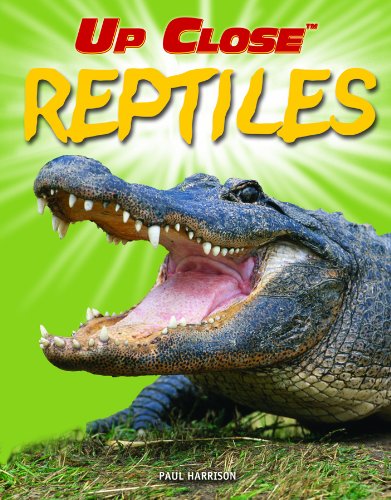-
Harper Lee
Kerry Madden
Hardcover (Viking Juvenile, March 19, 2009)Nelle Harper Lees To Kill a Mockingbird was published in 1960 and became an instant bestseller. Two years later it was an Academy Award winning film. Today, it remains standardand belovedreading in English classes. But Lee never wanted the book to define who she was, which explains her aversion to any kind of publicity. Kerry Madden conducted extensive research for this Up Close biography, which reveals Lee to be a down-to-earth Southern woman who enjoys baseball games and playing golfand whose one and only published book happened to win the Pulitzer Prize.
-
Tidepools: The Bright World of the Rocky Shoreline
Diana Barnhart, Vicki Leon, Frank Balthis
Paperback (Silver Burdett Pr, June 1, 1995)Shows and describes tidepool wildlife, including starfish, crabs, seastars, gulls, octopuses, barnacles, fish, and snails M
M
-
Robert F. Kennedy
Marc Aronson
Hardcover (Viking Juvenile, April 5, 2007)Before his short life was ended by assassination, Robert Kennedy was Attorney General of the United States, Senator from New York, and a charismatic Presidential candidate. But even more astonishing was Kennedys personal odyssey. Born into immense wealth and privilege, Kennedy came to embrace the cause of the poor and the disenfranchised, and to be seen by them as their champion.
-
Up Close: Noses That Plow And Poke
Diane Swanson
Paperback (Douglas & McIntyre, June 30, 2000)Who's nose-y? Most animals are! That's because they usually have a much better sense of smell than humans do, and depend on their noses to find food, sense danger, poke around, and--if they're tame--do tricks. Black bears and grizzlies sniff out squirrels that are running underground, sharks smell blood from a distance of three city blocks, and rabbits have six times the sensors we have. Full-color photos and black-and-white illustrations capture an array of animals in their natural habitats. The author lives in Victoria, British Columbia. 32 pages (all in color), 8 x 10. NEW IN PAPERBACK K
K
-
Parrots, MacAws & Cockatoos
Vicki Leon, R. H. Armstrong
Library Binding (Silver Burdett Pr, Sept. 1, 1994)Describes how these popular birds live in the wild, and explains why many species are endangered S
S
-
A Raft of Sea Otters
Vicki Leon, Richard Bucich, Jeff Foott
Paperback (Silver Burdett Pr, May 1, 1995)Shows and describes the characteristics and behavior of sea otters, and tells how they groom, find food, and raise their young
-
165 Million Years of Dinosaurs/All About Theropods, Sauropods, and a T. Rex or Two
Francois Gohier
Paperback (Silver Burdett Pr, March 1, 1995)Describes how scientists discovered the dinosaurs, discusses what has been learned about dinosaurs and their behavior, and considers the evidence for causes of their extinction
-
Bill Gates
Marc Aronson
Hardcover (Viking Juvenile, Dec. 26, 2008)Bill Gates is many things: the richest person in the world; the ruthless businessman who co-founded Microsoft and led it to domination of the computer software industry; and now, the leading global philanthropist. When Gates was born in 1955, no one in the world owned a personal computer. A window had a pane of glass. A mouse was a rodent. As a teenager, Gates realized how computers were about to change the world, and made his fortune by riding that wave; modern teens look to him as their model of how technology can be turned into wealth. Marc Aronsons biography is a probing portrait of a man whose name is a household word.
-
Icebergs and Glaciers: Life at the Frozen Edge
Barbara Wilson, Art Wolfe
Library Binding (Silver Burdett Pr, May 1, 1995)Explains how glaciers are formed, move, reshape the land, and create icebergs P
P
-
Up Close: Headgear That Hides and Plays
Diane Swanson
Hardcover (Douglas & McIntyre, June 30, 2001)Caps, hats, helmets, and hoods--they keep you warm, or cool, or dry. They can stop sunlight from getting in your eyes or protect your skull from injury. And, lots of animals have their own special form of headgear too! From the two scaly horns that help the African adder find food to the feathers kingfishers use to communicate, see just what dozens of creatures do with their manes, crests, and other head-topping adornments. Some, like elks, need their antlers to fight. Others, including decorator crabs, adorn themselves in a homemade headdress (seaweed, sponges, and sea anemones) that blends with their surroundings and keeps them safe. And, of course, just like us, animals wear hats to look pretty and for play! With great pictures of a wide range of "beasts" from buffaloes and chimpanzees to tube worms and whales. K
K
-
Hawks, Owls & Other Birds of Prey
Denise K. Fourie, Frank Balthis, Cathi Von Schimmelmann
Paperback (Silver Burdett Pr, Sept. 1, 1994)Shows and describes eagles, hawks, owls, falcons, osprey, kites, and condors, and looks at the life cycle and behavior of birds of prey
